Glossary B
Beetroot Achar/Achaar refers to pickles made of Beetroots. One of the vegetables available in Kerala, India which they made into pickles. Like in any other Achar which I already featured here. Beetroots are cut into small pieces and cooked with lots of spices, Red and Green Chili Pepper, Vinegar, Salt and Curry leaves. (Please see related article on Achar/Achaar for the spices used for making Achar).
Below is a picture of Beetroot Achar prepared by my my Aunt Lily in Allepey, Kerala, India. It is a mixed of spicy (from Red Chilies) and sweet taste of Beetroot. I love Beetroots and I intend to also prepared Beetroot Achar here in Germany, as soon as my order for fresh Curry leaves arrive.

Badam Milk refers to a warm beverage from India made with almond meal (roasted/blanced and grinded almond), Sugar, Cardamom powder and Saffron. Badam Milk can also be sweetened with Jaggery or Honey.
Although it is mostly serve warm, some people likes them served cold.
Badam is the Hindi word for Almond.
Pictures below is a warm Badam Milk sold as street food in the heart or center of Coimbatore in Tamil Nadu at night time.
Please see Article on Badam Milk being sold in the night as street food in Kanyakumari, Tamil Nadu, another southern state of India
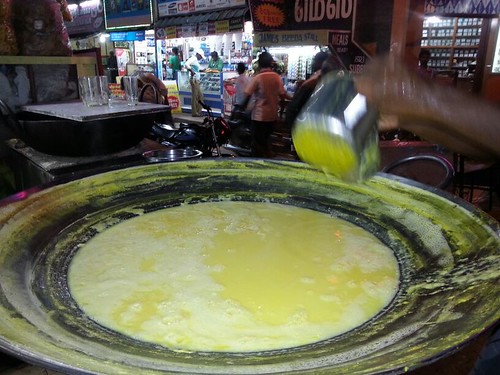

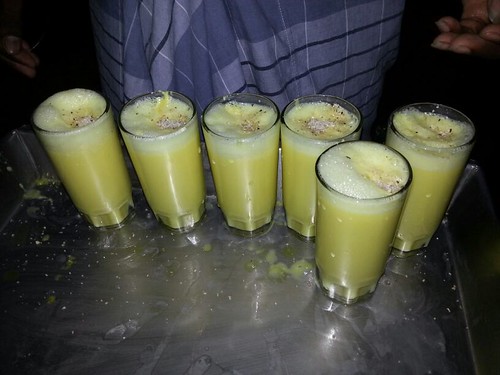
Beef Cutlet is one of the foods from Kerala, India which is made from finely chopped or ground beef, with mashed potatoes and spices, then rolled into flour and egg, then deep fried.
Cutlet made from meat and fish is Kerala's version of Croquetes.
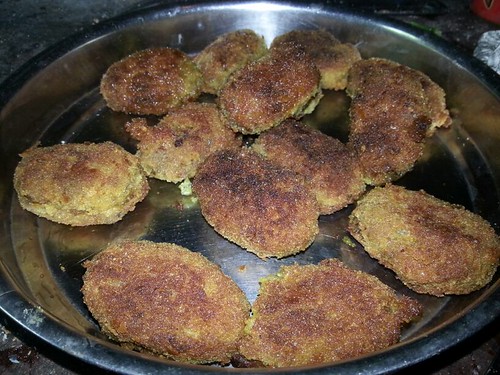
Below is the raw version of Beef Cutlets rolled into flour, visible are chopped onions and chopped green chilies, the 2 ingredients used in Kerala to make Cutelts be it meat or fish.

Picture below is my family friend from Allepey, Kerala, India preparing and cutting her raw beef to make Beef Cutlets

Burfi is an Indian version of cheese cake that is considered a dessert in India. Burfi is actually not made from cheese but made of milk and spices, particularly cardamom until it reached its right consistency and turned like a soft cheese cake.
Below are version of Burfi sold in one of the sweet shops in Allepey, Kerala, India
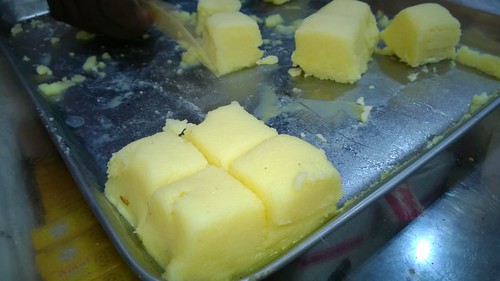

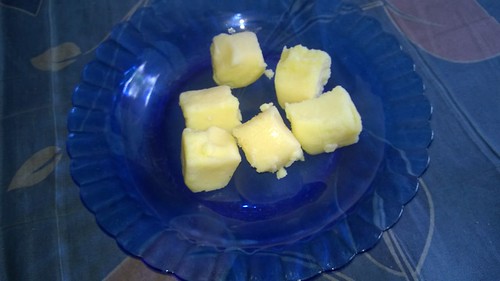
These slices of Burfi is sold from this small sweet shop in Allepey, Kerala, India. The store might be small, but their Burfi has a big big delicious taste

Bonda is made from lentils and a typical food from Kerala, India. They are deep-fried and often served with savory dips and curry.
Bondas also known as Vadas are round deep fried savory snack made in different varieties usually from lentils, potatoes etc. eaten with a chutney. Aloo Bonda or Urulaikizhangu Bonda (Potato Fritters ) is a classic/traditonal tea/ coffee time snack in India.
Pictures of Bonda sold in Chaya Kada (teashop) in Allepey, Kerala, India is made from lentils and spices and served with Beef curry or other savory curries which might be available during the day.
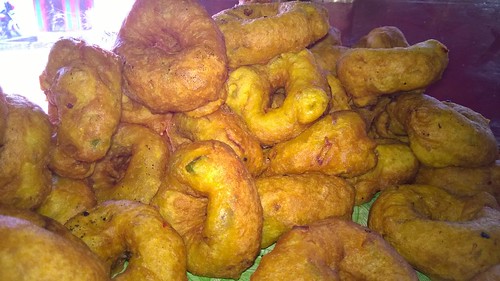


English: Batwan / Deutsch: Batwan / Español: Batwan / Português: Batwan / Français: Batwan / Italiano: Batwan /
Batwan refers to a green sour fruit which is used as a souring agent for making Sinigang dishes (sour soup) in the Philippines in placed of tomatoes, Calamansi, Kamias and Tamarind (Sampaloc)
Batwan which is also called Batuan, Batuan or Batuwan or Garcinia Binucao is indigenous to the Philippines and possibly Vietnam, and it is a relative of Mangosteen.Its fruit is somewhat round in shape, around 4 centimeters in diameter, greenish in color which turned yellowish when mature. They have a firm outer covering and contain a very sour pulp and several seeds. It has a sour taste but not acidic to the stomach. The Batwan tree thrives in parts of Bohol and Leyte as well but it isn’t used much in those cuisines.
The use of Batwan fruit is one of the distinct features of Ilonggo cuisine, especially for cooking "Sinigang", Philippines sour soup or stew.
Batuan or Batwan is also known as Binukau or Binukaw in Tagalog (from where its scientific name was derived), and Balakut in Ilocano. Batwan is called in various names in other parts of the country:
Ballok (Benguet); Balikot (Ilocos Norte); Bangkok (Zambales); Bilukao (Rizal, Bataan, Batangas, Camarines); Binukao (Laguna, Bataan, Batangas, Camarines); Buragris (Camarines); Kamangsi (Tayabas); Kandis (Palawan); Kamurai; Kulilem (Cagayan); Haras (Capiz) and Maninila (Albay).
The use of Batwan is dying out in most part of the Philippines and it might not even known in other parts of the country, except Negros and nearby areas that use it a lot in preparing some of their dishes.
Negros Region of the country, particularly Bacolod use Batwan as souring agents in cooking various dishes, such as Paksiw na Isda (fish cooked in vvinegar, Kansi (jackfruit with mung beans and coconut cream), Pinamalhan (a dry style Paksiw na Isda) and Tinolang Isda (fish with sour soup). Batwan is also use in cooking the classic dish named KBL (Kadios, Baboy and Langka) from Iloilo. In Negros, the people basically use Batwan to any dish that requires a souring agent instead of Tamarind (usualy souring agent in Luzon Island).
It is said that Batwan only grows in Panay or Negros, other people say that it is also abundant in other parts of the country, but perhaps not used as souring agent. Batwan is a huge tree with lost of fruits when it is in season. and it is the only souring agent that the people knows in Panay and Negros Provinces/Islands. However, It is said to be used also in other Provinces, such as Leyte, Bohol, Masbate.
Below is a not so well-photographed picture of Batwan which was luckily shared by a friend from Iloilo to my brother who likes to experiment on other local products to make his Sinigang.
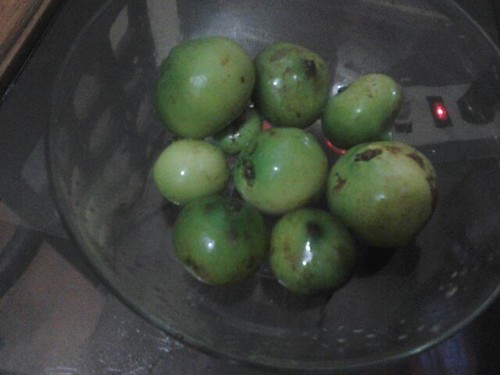
Personal Note: Based on my experience, Batwan is not so well-known in Luzon Islands of the Philippines, where Kamatis (Tomatoes), Kamias, Calamansi and Sampaloc are used as souring agent in making Sinigang. Batwan is mostly used in the Visayas Island of the country, particularly in Iloilo (Negros Provinces). I came to know about Batwan because my first husband's family came from Iloilo and they used to have a cook who also came from the Province and used Batwan when cooking dishes like KBL, Tinolang Isda and Sinigang

